 "vicariousILive" (vicariousILive)
"vicariousILive" (vicariousILive)
06/13/2014 at 10:58 • Filed to: None
 0
0
 9
9
 "vicariousILive" (vicariousILive)
"vicariousILive" (vicariousILive)
06/13/2014 at 10:58 • Filed to: None |  0 0
|  9 9 |
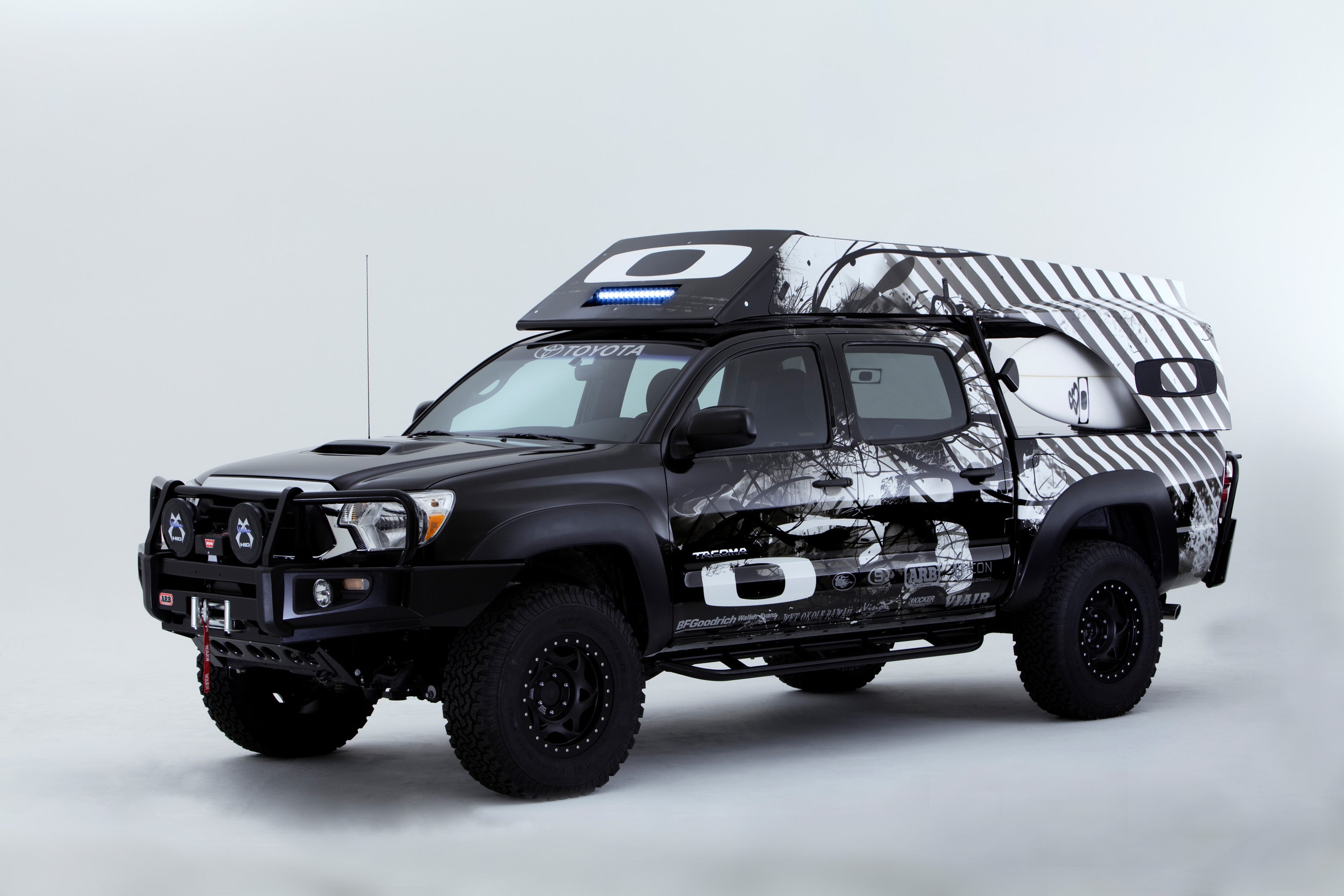
Specifically a 2nd gen Toyota Tacoma coolant flow rate after exiting the heater core? I'm designing an !!!error: Indecipherable SUB-paragraph formatting!!! system for my 2012 Tacoma. I am trying to figure out what size of heat exchanger. I need the flow rate so I can make sure I have my preferred scalding hot shower when I'm out in the boonies.
If you don't know specifically the flow rate for any V6 would probably be in the ballpark to get a decent design. I tried to find the coolant pump charts but no luck.
This is what I'm going for...
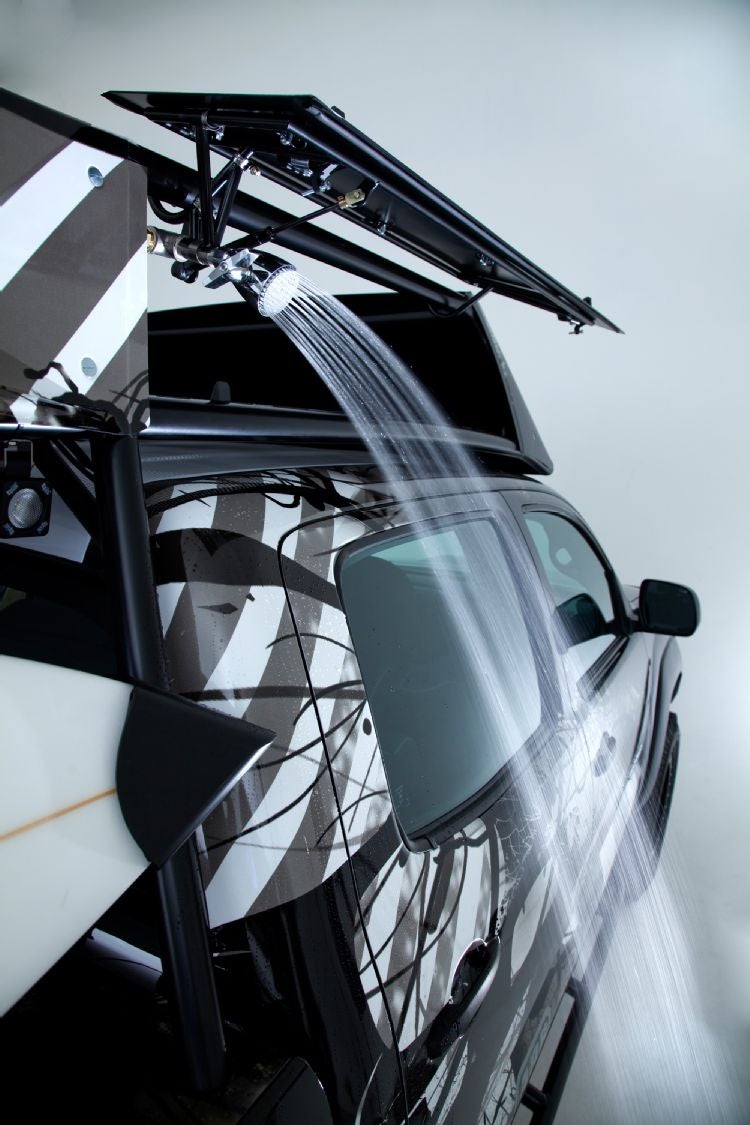
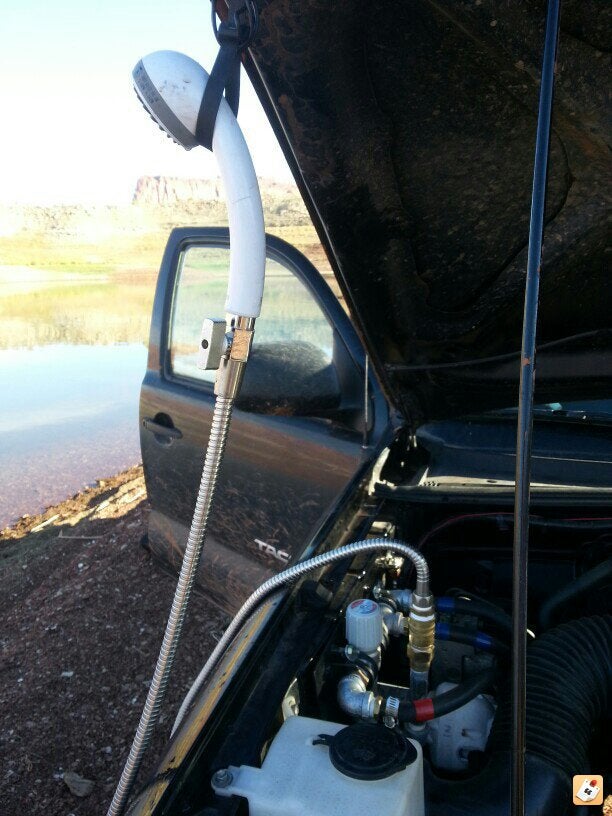
Here is something closer to reality..
 RamblinRover Luxury-Yacht
> vicariousILive
RamblinRover Luxury-Yacht
> vicariousILive
06/13/2014 at 11:35 |
|
It's probably possible to get an in-the-ballpark estimate for water pump capacity just based on radiator hose size. Here's a toy for plugging in ID and GPM for finding 5FPS speed- an advisory which is probably faster than what you'll get by whatever margin of safety the designer used.
If your ID coming off your water pump is e.g. 1.5", you're probably not going to see more than 20 GPM. Since you're not using all your available capacity at the engine, (i.e. not hooking inline with the water pump), it's much harder to figure your available flow after the heater. Still, the same calc should work as an upper limit - I'd expect certainly no more than 3-4 GPM (5/8" heater hose) even with everything perfect. Short answer: to get your target numbers, you may need a booster pump and/or to bypass/tee in in parallel to your heater core instead of through.
Do you actually know what your heater core exit temp is? What type of heat exchanger are you planning to use? What would be amazing is something called a brazed plate heat exchanger, but they're typically custom ordered and expensive as shit - anything short of that will have big losses, too.
If you're trying in depth to work some of this out, look up Bell & Gossett Syzer - free download, will allow you to calculate head losses and heat capacity for glycols, all kinds of fun stuff. Not very user friendly, though.
 vicariousILive
> RamblinRover Luxury-Yacht
vicariousILive
> RamblinRover Luxury-Yacht
06/13/2014 at 12:32 |
|
Thank's for the plethora of info
I don't know what the heater core temperature is upon exit. I am most likely going to be running this thing when the heater is not running, therefore minimal heat loss. In my Tacoma there is no heater valve so the coolant is always flowing through the heater core. So my best guess it is going to be pretty close to operating temperature @ 190F although that is not worst case
I was going to build my own out of copper pipe until I heard of the affordability of the brazed plate heat exchanger. Here's this site where I found them to be very much affordable . This is what I plan to use. I want to get the right exchanger because I want a hot shower(~105 degF) without having to recirculate my shower water and I don't want to screw up my coolant system by restricting flow in my heater line. But at flows of 3-4 GPM I heat exchangers should work quite well without much pressure loss.
 RamblinRover Luxury-Yacht
> vicariousILive
RamblinRover Luxury-Yacht
> vicariousILive
06/13/2014 at 12:39 |
|
Interesting - for some reason I expected them to be more expensive than that.
(My business uses substantial ones with high plate count that we special-order, so I guess I'd just assumed).
Do you know anybody with experience building circuits? It's distinctly possible that the passive flow rate through the heater core is a good *resting* rate - a lower threshold for your temps. A control circuit could meter your flow via control of a secondary coolant pump (like you'd see on BMWs and others) based on temp. Most of the parts to build that wouldn't be expensive.
If, however, it turns out you've got plenty of flow and plenty of heat, you could just control heat by using a manual heater valve.
Anyway, as the owner of a car with a PTO, I applaud secondary-purpose setups on vehicles. Just don't get burned out there.
 vicariousILive
> RamblinRover Luxury-Yacht
vicariousILive
> RamblinRover Luxury-Yacht
06/13/2014 at 13:44 |
|
PTO!? You drive a Massey Ferguson?
My plan is to control the heat shower water is a thermostatic mixture valve. Basically a fancier term for a shower valve. I have found some on ebay from $40 to $50. But there's no point in using it if the water is not going to get hotter than my skin threshold.
This pic is what I plan on doing. It's from that thread I linked in my original post
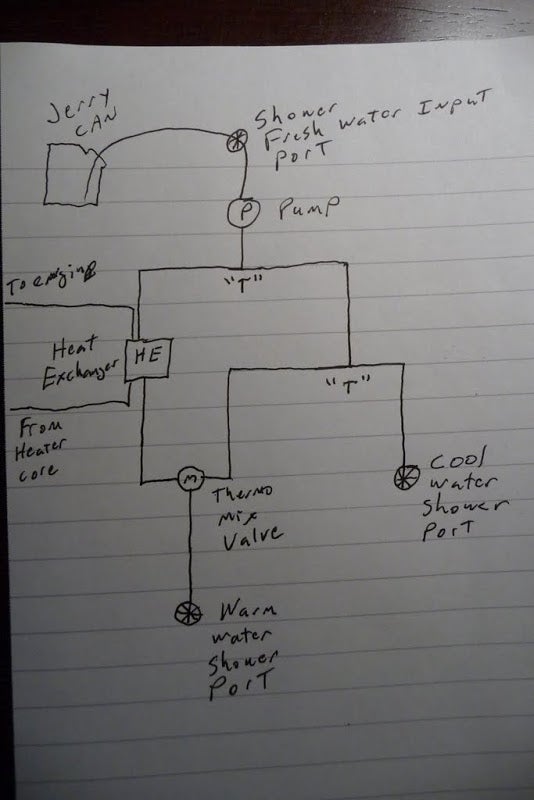
 RamblinRover Luxury-Yacht
> vicariousILive
RamblinRover Luxury-Yacht
> vicariousILive
06/13/2014 at 13:51 |
|
That looks like it could very well work, and provides a pretty solid, simple way to keep you from roasting yourself. Good thinking.
As to PTO, see below.
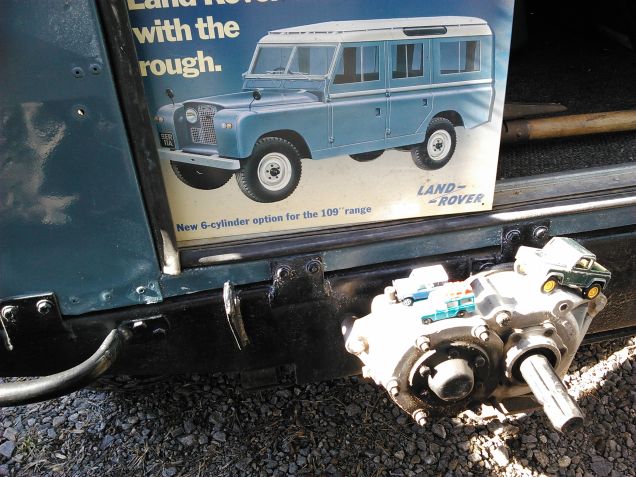
 vicariousILive
> RamblinRover Luxury-Yacht
vicariousILive
> RamblinRover Luxury-Yacht
06/13/2014 at 13:57 |
|
What do you use it for?
 RamblinRover Luxury-Yacht
> vicariousILive
RamblinRover Luxury-Yacht
> vicariousILive
06/13/2014 at 14:06 |
|
Conversation piece so far - though I'm thinking of getting a PTO generator trailer. We've got two other Land-Rover PTOs: one is an off-the-shelf reversing gear case, one is an antique Jeep unit (this is the only original LR/Fairey rear box), so having something we can use with three vehicles isn't a bad idea.
The Florida Department of Highways had some of these that they used as median mowers.
 vicariousILive
> RamblinRover Luxury-Yacht
vicariousILive
> RamblinRover Luxury-Yacht
06/13/2014 at 14:29 |
|
Never heard of of such a thing. So do you install the hydraulic pump or is that standard?
Either way it's very cool
 RamblinRover Luxury-Yacht
> vicariousILive
RamblinRover Luxury-Yacht
> vicariousILive
06/13/2014 at 14:51 |
|
It's a shaft drive from the back of the transmission. All the Series II Land Rovers had a hole through the back to allow for it, see pic:
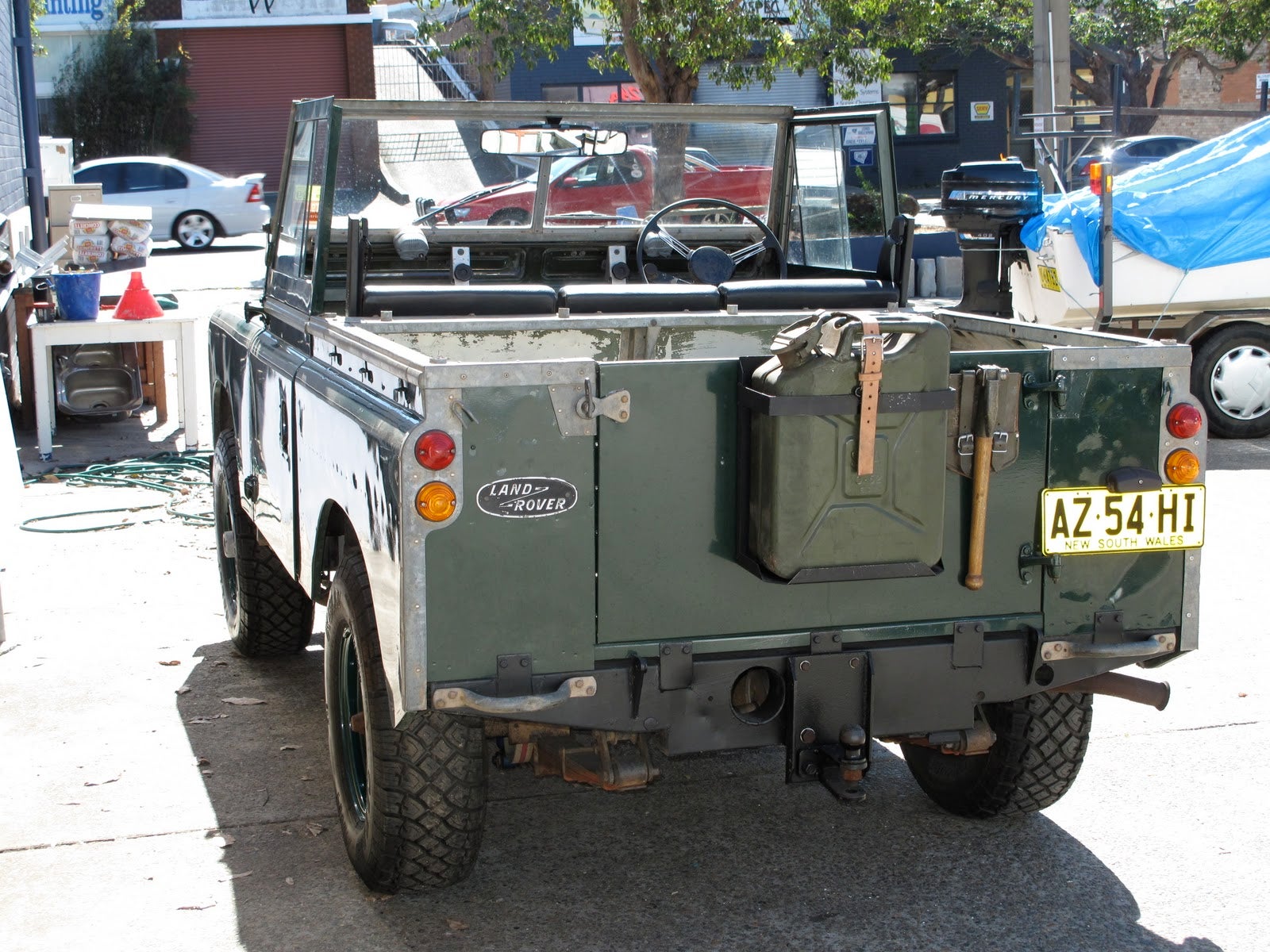
There were several available transmission interfaces; the one on the transfer case opposite the input shaft was the most common, but there was also a bottom mount one and a hydraulic pump version. The transfer case input gear came from the factory with a dog gear on the face to allow for this. Because standard car motor direction is reversed from what a PTO requires, all the rear boxes have to be a reversing step-down box. Early Jeep CJs also had this setup as an option, the so-called "Farm Jeep".
There were many, many goofy options like available for the Land Rovers, and the unit on the back was also available in a version to drive equipment belts, and even a fire pump version. However, these days the transmission output kits far outnumber remaining rear step-down boxes, so a full kit is a little harder to put together.
We've (my family, we're big into these) got 4 for the transmission side, I think. Two currently installed on trucks (one mine, one a cousin's), and two waiting to be installed. Only three rear output boxes so far, and only one's original. We're looking to get a hydraulic trans-side unit for the five-door we've got, as that's the only original configuration that can't be used with a shaft PTO - the fuel tank's in the way.